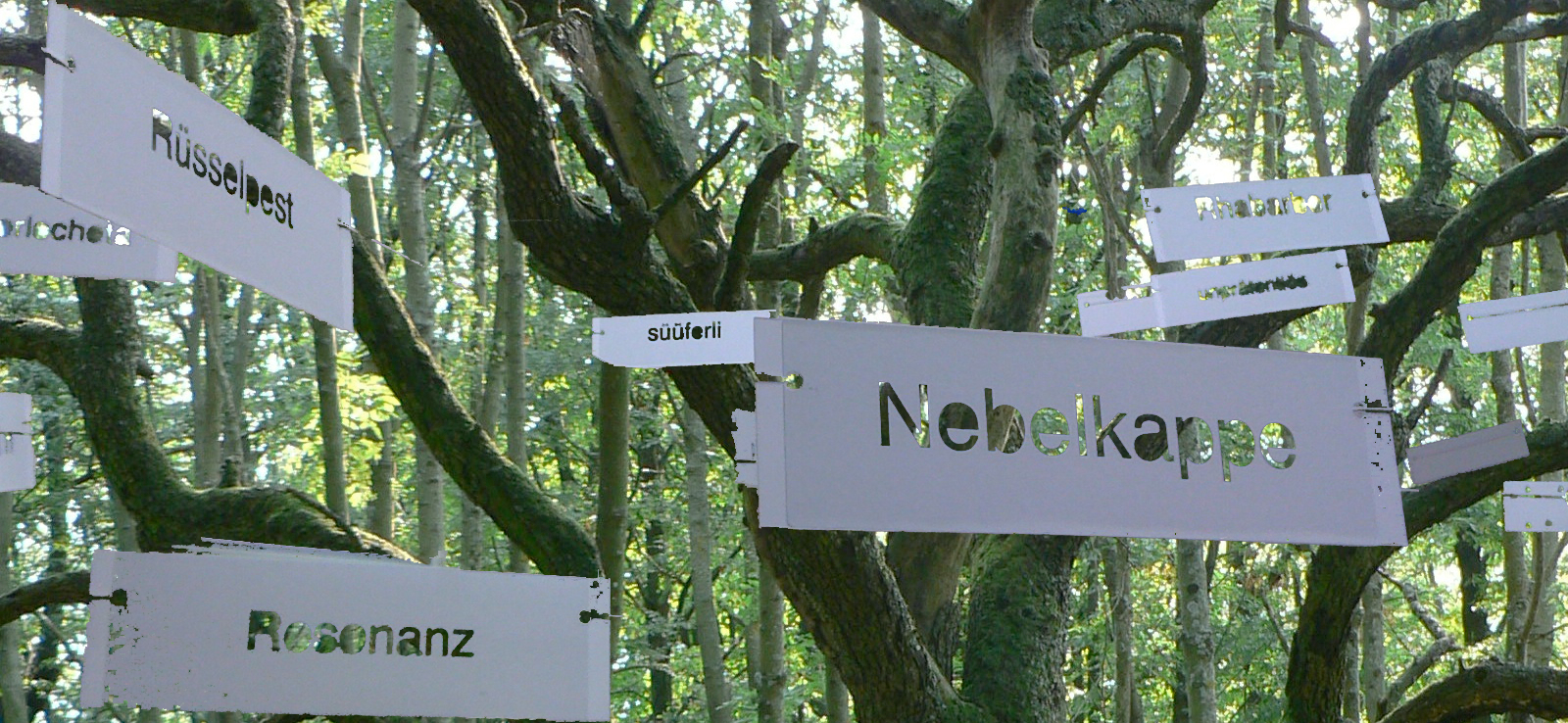Artists from all over the world attend the annual u19 – CREATE YOUR WORLD Festival. They flash their ideas, take them out for a test run here and draw inspiration for what they’re up to next. Séra Ildi is from Hungary. She works with memories preserved by people, places and things, and weaves them into new fabrics. At the festival, she’ll be knitting portraits. Here, she elaborates on her work.
How can memories be made visible for others?
Can I wear my memories like pieces of jewelry?
My knitted portraits are personalities turned inside out: character traits, recollections and dreams are captured in a sort of mask. The colors and materials are selected by the person sitting for the portrait; everything else is the outcome of my interpretation. In going about this, I work like memory does: I internalize the stories my subjects relate, process them, and weave the narrative further. I accentuate a few elements with colorful threads and unusual materials, and I make others vanish.
From authentic memories and my perception come knitted narratives.
In knitting a person’s portrait, listening to what they have to say, getting acquainted with them is essential. Sometimes, people confide in me, tell me their whole life story. These encounters can give rise to friendships, or they can remain luminous, solipsistic remembrances.
Last year at Bizaar, the actionist platform of the Festivals “Buskers Bern”, after finishing each knitting session, I asked the people to give me a present. And I ended up receiving wonderful, personal gifts, some of which arrived weeks later in the mail.
In my next installation as well, “Archeology of Memories” (in conjunction with„Invisible Zürichs“,
a project of the social-artistic city laboratory zUrbs at the Südbühne venue of Theater Gessnerallee Zürich), I’m also seeking possibilities to make stories visible. In various Zürich websites, I’m collecting city dwellers’ recollections, which I then absorb, disassemble and condense.
In this way, they become a mass I can work with, that I can weave into a web that I can stretch out over the whole city.
I document the exact location of each, so I can draw up a city map of memories. I visit these streets and squares, and scrutinize them to discover possibilities to make the words and sentences visible. I select trees that, instead of foliage at the end of October, are adorned with narrative accounts—threads wrap themselves around the trunk, words crawl up the bark. The stories find their way back to their places of origin, and thereby unfold their charismatic power.
I also write the words and sentences of the story right onto the concrete pavement. Pedestrians come along and walk right over them. The rain falls and washes them away.
The fleetingness of the chalk letters is very much akin to the fragility and lightness of the threads.
On the other hand, this is a matter of positioning the stories at a particular location, the words’ homecoming of sorts.
I invented memories of imaginary people in a series entitled „The Story of Z.“ New in Zürich, I made this my “welcome-home” gift to the city. I wandered through the streets, my route determined by the particular mood a place evoked. This resulted in eight black & white photographs paired with text fragments.
Together with the Viennese actionist group Was wohnst du, I investigated lingering traces of long-gone strangers. Our mise-en-scène was an abandoned apartment building in which the last tenants had left behind their books, dumbbells, x-rays and whole sets of linen.
We appropriated the objects to serve as the basis of our installation, and decoded, in our own idiosyncratic way, the memories that suffused each apartment. An art film occupied the closet in which overcoats once hung. Pulp fiction found its way onto the night table. A musical instrument made of a billiard table and tin cans stood in the living room.
On the walls, a game took place in which visitors could select from among thousands of photographs of the interiors of all sorts of homes in order to create the backgrounds of the imaginary lives of the people in the photographs. Thus, during the Soho in Ottakring Festival, we played out our stories in a building that smelled of the past.
The first scars upon the splendid vestibule of a haut bourgeois home were inflicted after World War II when it was converted into a janitor’s flat. After 1989, the apartment morphed into a gallery, thus consummating the space’s interesting, slightly bewildering, multilayered complexity. Memories of the various stages this interior has gone though were made visible by sound installations, video projections, literature fragments, photographs and designed objects.
This could complete the cycle, if indeed it is a cycle and not a spiral, one consisting of intimate and strange recollections, of people and buildings and cities and continents…
_______________________________________________________________________________________
Sėra Ildi was born in 1972 in Hungary and studied architecture and photography at Vienna University of Technology and the University of Portsmouth. In 2005, she founded in_between : culture, an association that produces literature & multimedia projects. She’s a photographer, does art in public spaces, and designs installations. She is currently working on “Archaeology of Memories,” an installation in a public space in Zürich, and on a series of art actions in cooperation with Merkurgarten, a Zürich urban gardening initiative. She knits and exhibits her art in the Netherlands, Germany, Austria and Hungary.
